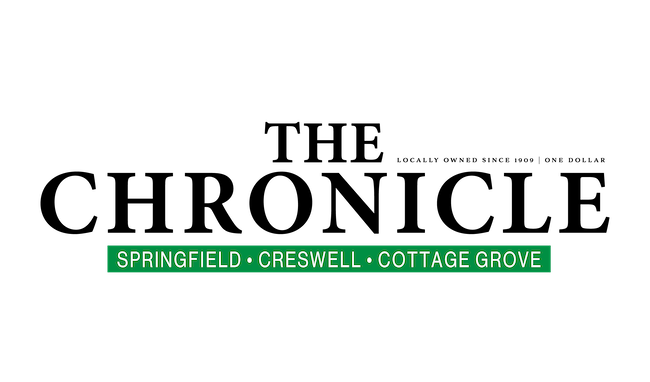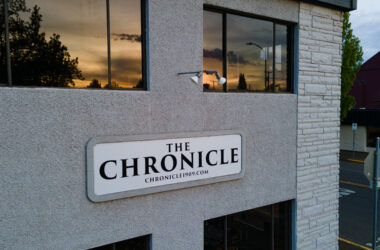
On Wednesday, Jan. 20, in his inaugural address, the new president repeatedly intoned the theme of “unity.” He outlined the challenges facing us as a nation: the ravages of the coronavirus, including the loss of over 400,000 lives, millions of unemployed, businesses closed or in danger of doing so, a smoldering legacy of racial injustice over 400 years in the making, our planet’s cry for help as 7 billion-plus humans strive to survive, and the rise of political extremism. To address these issues, he said, “It requires that most elusive of things in a democracy: Unity. Unity.”
Feeling inspired after the address I resolved to seek unity by reaching out, in particular to people I know to have different viewpoints and opinions from my own.
It starts with my own family. One of my nephews, whom I consider a gifted writer, kind, considerate, creative, and who did a wonderful job describing my mother’s influence on his life at her funeral, caught my attention on Facebook. He was making strong claims about the evils of mail-in voting. I commented back that in Oregon we have had vote-by-mail beginning in 1981 with local elections, leading to the 1998 overwhelming vote for Measure 60 by Oregonians supporting mail-in voting for all elections. I also added that it remains popular with both major parties and voters in general. He wasn’t impressed and I noticed his posts becoming stranger and more bizarre. He had gone down the QAnon rabbit hole.
Our relationship is still in need of repair and I have not reached out just yet. But since he lives on the opposite coast there is less urgency, especially since the tenor of his online presence doesn’t indicate we share much common ground. But I promise to get to it!
I had better luck locally. Serendipitously, or guided by fate, on Inauguration Day, during my first venture out in town, still under the influence of my resolve to pursue unity, I crossed paths with someone possessing a diametrically opposed world view. It was a good first test. It did help that we always have had a cordial and friendly relationship for sure, but after a leisurely and wandering conversation it became obvious that unity is not going to be a slam dunk. There is a lot of distance between our viewpoints.
From this conversation and others that I have had in days following, I have come to the conclusion that what you believe largely comes from your source of information. This is a huge can of worms.
I am not a TV person, though I do see some programming via the Internet. I can’t stand the constant barrage of advertising. I know it has gotten worse than when I was a kid. The ads then were few and happened after about 10 minutes of programming. And some of those ads were actually entertaining. If not, it was a great chance to dash to the bathroom or grab a snack.
But then as now, what is shown on a particular channel is determined by how many people tune in to watch. That goes for entertainment shows, sports, and the news. Different networks provide their best guess at what people will choose to watch and adjust per the Nielsen ratings. Viewer numbers are a big part of how much you can charge for advertising, too.
Now let’s take the news. If all of the networks portrayed the same factual coverage, would that affect viewership? Apparently so because if you channel surf through the news you will see the same story told in different ways and interpretations. I got this lesson the first time I traveled abroad.
One big reason for this potpourri of viewpoints between the networks was the revocation of the 1949 FCC Fairness Doctrine, which was designed to provide equal air time for opposing viewpoints on the radio. It arose out of complaints that radio stations had become one-sided bullhorns for one political view. The “doctrine” was formally revoked in 1987. Talk radio was born out of this change in policy, as well as single-topic TV networks.
The Fairness Doctrine did not apply to print news. The press had long enjoyed editorial freedom and newspapers were known for their individual viewpoints. In 1960, famed newspaper critic A. J. Liebling wrote about his concern with the consolidation of newspaper ownership: “Freedom of the press is limited to those who own one.” He argued that what was printed was not so much truth as a business decision. As the industry became less competitive due to consolidation, viewpoints offered in print were less accountable in the court of truth.
This idea extends to any media platform, many of which Liebling and his generation could not imagine. So can a private company such as Twitter, or Facebook, kick someone to the curb? They are private companies and the services they provide are by subscription. You have to sign up and agree to rules and policies to participate. So, since they own the press, is that censorship? Not really. Is it a business decision? I’d say a resounding yes!
Private companies such as Microsoft, Google, Yahoo, etc. have their own twist on shaping the news you see, algorithms. These algorithms are nothing new and have been around since antiquity. They are simply a set of steps you go through to get a certain result. They are particularly useful in mathematics and computer science.
When coded into computer search engines and media platforms, algorithms take your data and affect what you are presented with on your screen. Granted, it is convenient. If there is something you are searching for often, your last recorded search pops up and you don’t have to do all of that typing. And it makes useful suggestions for you too. On the other hand it also determines what you will see in the future. For example, my wife has recently gotten interested in mountain biking and since we often share computers, now I am being bombarded by ads for all sorts of mountain bike products, sites, and offers, even on a different computer. The dang things are following me!
Algorithms aren’t just driving the advertisement that intrudes into your screen; by analyzing what news stories and topics you click on, they largely decide the stories you see. An invisible hand guiding what you see as “the news.”
With the advent of the Internet, anyone can post anything. From a piece by James Breiner that appeared on the Mediashift website comes this bit: “The Internet has given everyone with a computer and Internet access their own printing press. You don’t have to be a mogul to publish your opinions. The big question is: Can you get anyone to listen?”
With the ability to instantly put your two cents on to the world-wide web, largely unchecked, there are plenty of opinions and “alternative facts” out there. And this seems like a good place to clarify the difference between a fact and an opinion. Everyone has an opinion on nearly everything. A fact is something that can be verified by multiple independent processes and can prove its validity beyond question. Just because you believe something doesn’t necessarily make it true.
As a science teacher, that was one of the early concepts I had to drill into my students: the difference between fact and opinion. Both are useful in our lives – and it is important not to confuse them.
In my conversations this past week, I kept asking: “What would it take to convince you that a claim is true?” There was no agreement to that query, which points to a bigger problem. How can we offer a statement of cold, hard facts so that they will be accepted by most people? If we can’t agree on what is true anymore, how are we going to unite?
Another factor that is going to be hard to bridge is the divide between us. No matter how you slice it, there is a divide that has grown in our country that spread to a Grand Canyon-sized chasm.
Finding a bridge is going to be difficult. It may not be possible nationally. But many of my conversationalists agreed that we do have a chance locally. They suggested since we are a small town, people mostly know each other so we might as well get along because you are going to see each other again.
And talking with each other, and even more importantly, listening carefully without judgment is critical. If you only get your viewpoints from your algorithm-driven media and by getting them reinforced by people who agree with you, how can we reach across our divide? It’s like we need our ideology to be confirmed by fellow believers to make it valid for us to also believe it. A ditto mark.
One friend suggested our country is like a mixed-up mess of about four different thousand-piece picture puzzles. It is going to take a lot of time and effort to sort out all of those pieces and find out how to fit them together.
I am convinced that it is possible, through dialogue, to put ourselves back together again as a people. And it’s going to require listening, empathy, and willingness to agree on an arbiter of truth.
The war on truth through the past four years has left most folks not knowing who or what to believe and that makes it hard to have a starting point for a conversation. It’s like two die-hard fans of an intense sports rivalry having an argument over the outcome of a game in the future. Deeply held opinions won’t influence the outcome, but after the game is over, the facts can be examined: yards rushing, interceptions, penalties, missed opportunities, turnovers, bad calls, etc. to explain the results.
Let’s pledge to talk to each other, stick to facts, listen, try to understand, and go out of your way to talk to someone outside of your own echo chamber. We are all in the same boat so let’s start to pull at the oars together. Unified rowers will get a lot farther than a boat full of people who can’t agree on how to row or even if they should try. Unity!
Email:







